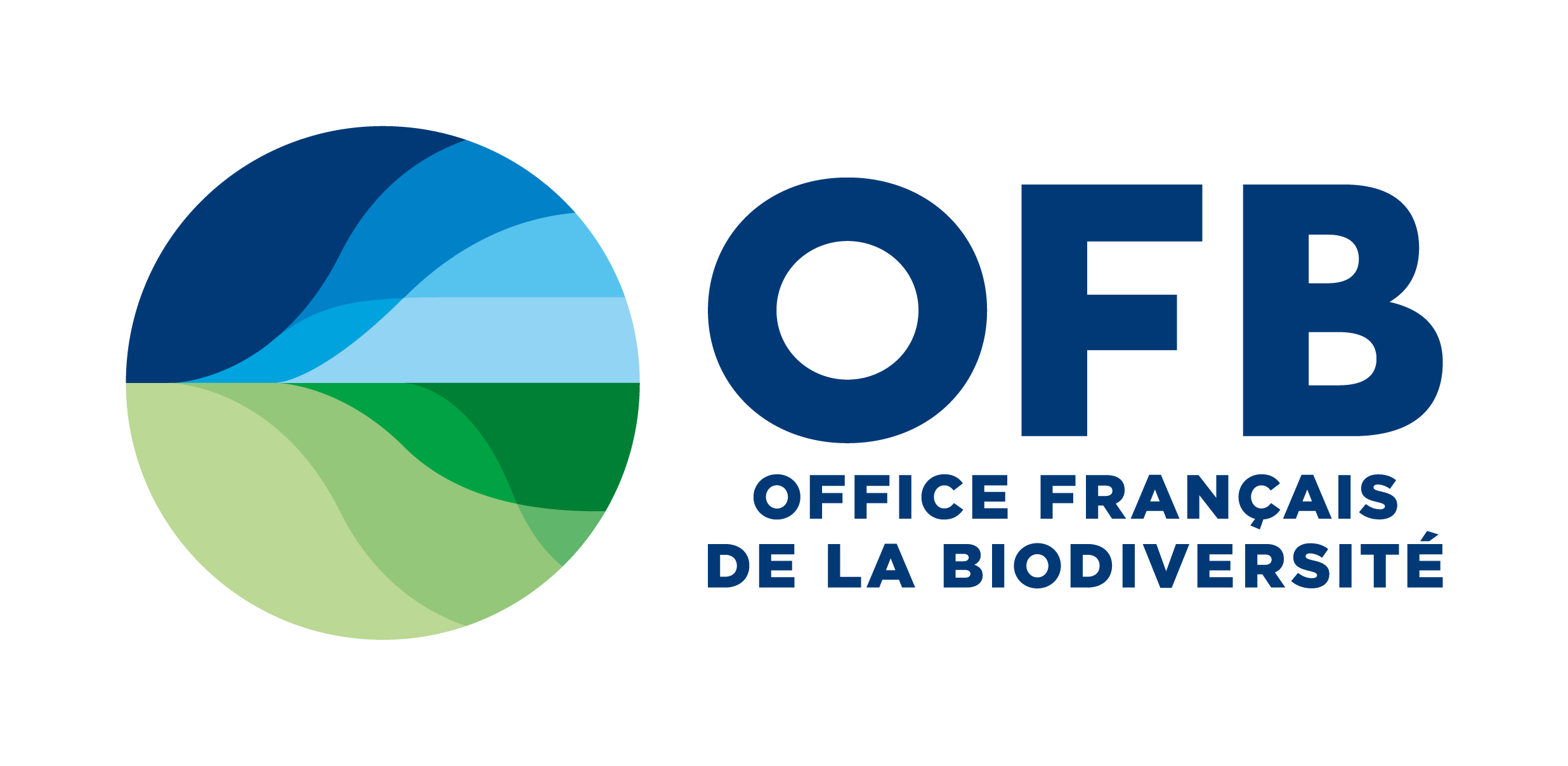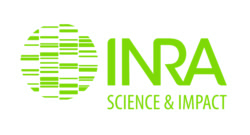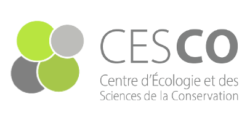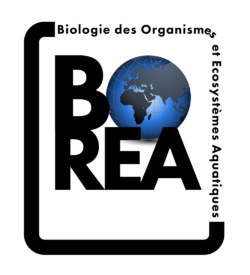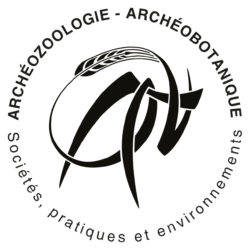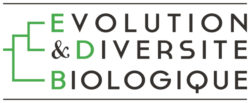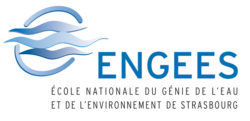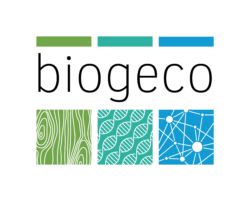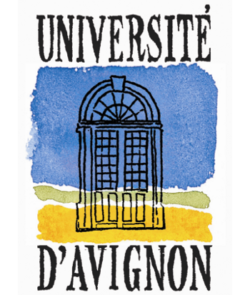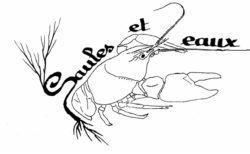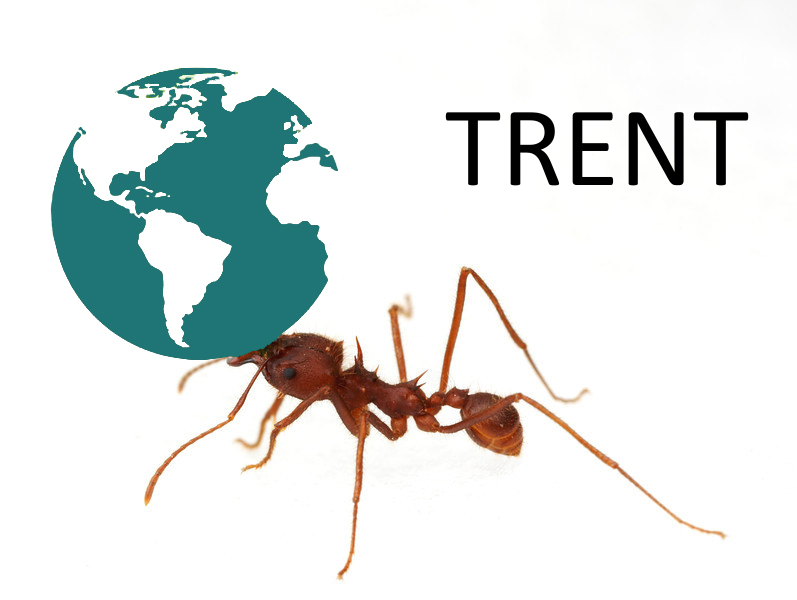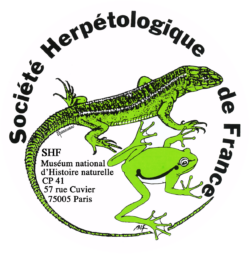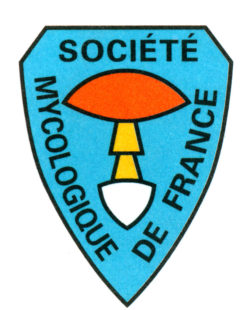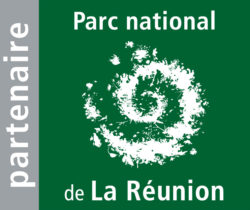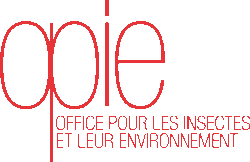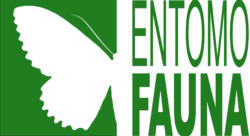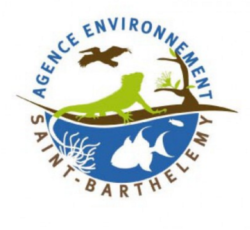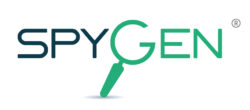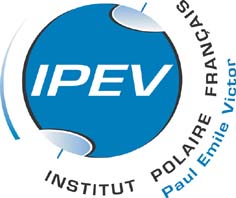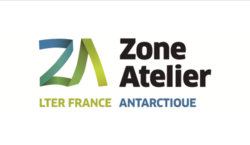Références bibliographiques relatives au groupe des mollusques
Pour rechercher un mot clé dans la page, taper le mot dans l’outil « rechercher » de votre navigateur.
Pour télécharger le document cliquez sur le rond bleu.
Albrecht, C., & al. 2009. Invasion of ancient Lake Titicaca by the globally invasive Physa acuta (Gastropoda: Pulmonata: Hygrophila). Biological Invasions 11(8): 1821-1826.![]()
Antit, M., & al. 2010. A gastropod from the tropical Atlantic becomes an established alien in the Mediterranean. Biological Invasions 12(5): 991-994.![]()
Apte, S., & al. 2000. Jumping Ship: A Stepping Stone Event Mediating Transfer of a Non-indigenous Species Via a Potentially Unsuitable Environment. Biological Invasions 2(1): 75-79.![]()
Asif, J. & P. Krug. 2012. Lineage distribution and barriers to gene flow among populations of the globally invasive marine mussel Musculista senhousia. Biological Invasions 14(7): 1431-1444.![]()
Baldwin, B., & al. 2012. Low dissolved ions may limit secondary invasion of inland waters by exotic round gobies and dreissenid mussels in North America. Biological Invasions 14(6): 1157-1175.![]()
Bastin, K. & al. 2014. Découverte de l’Anodonte chinoise Sinanodonta woodiana (Lea, 1834) (Mollusca, Bivalvia, Unionidae) dans la Sèvre Nantaise (Poitou-Charentes, France). MalaCo, 10 : 2-4.![]()
Berkman, P., & al. 2000. Habitat Shift in Invading Species: Zebra and Quagga Mussel Population Characteristics on Shallow Soft Substrates. Biological Invasions 2(1): 1-6.![]()
Bersine, K., & al. 2008. Distribution of the invasive New Zealand mudsnail (Potamopyrgus antipodarum) in the Columbia River Estuary and its first recorded occurrence in the diet of juvenile Chinook salmon (Oncorhynchus tshawytscha). Biological Invasions 10(8): 1381-1388.![]()
Boltovskoy, D., Correa, N., Bordet, F., Leites, V., & Cataldo, D. 2013. Toxic Microcystis (cyanobacteria) inhibit recruitment of the bloom-enhancing invasive bivalve Limnoperna fortunei. Freshwater biology 58(9): 1968–1981.![]()
Briski, E., & al. 2012. Invasion risk posed by macroinvertebrates transported in ships’ ballast tanks. Biological Invasions 14(9): 1843-1850.![]()
Brown, J. & Stepien, C. 2010. Population genetic history of the dreissenid mussel invasions: expansion patterns across North America. Biological Invasions 12(11): 3687-3710.![]()
Burlakova, L., & al. 2010. Differences in population dynamics and potential impacts of a freshwater invader driven by temporal habitat stability. Biological Invasions 12(4): 927-941.![]()
Carlsson, N. O. L. & Lacoursière, J. O. 2005. Herbivory on aquatic vascular plants by the introduced golden apple snail (Pomacea canaliculata) in Lao PDR. Biological Invasions 7(2): 233-241.![]()
Carranza, A., & al. 2009. Observations on the invading gastropod Rapana venosa in Punta del Este, Maldonado Bay, Uruguay. Biological Invasions 12(5): 995-998.![]()
Carrasco, M. F. & Barón, P. J. 2009. Analysis of the potential geographic range of the Pacific oyster Crassostrea gigas (Thunberg, 1793) based on surface seawater temperature satellite data and climate charts: the coast of South America as a study case. Biological Invasions 12(8): 2597-2607.![]()
Chan, K. & Bendell, L. I. 2013. Potential effects of an invasive bivalve, Nuttallia obscurata, on select sediment attributes within the intertidal region of coastal British Columbia. Journal of Experimental Marine Biology and Ecology 444: 66-72.![]()
Chapman, J. W., & al. 2007. Premature refutation of a human-mediated marine species introduction: the case history of the marine snail Littorina littorea in the Northwestern Atlantic. Biological Invasions 9(8): 995-1008.![]()
Chapman, J. W. ,& al. 2007. Parsimony dictates a human introduction: on the use of genetic and other data to distinguish between the natural and human-mediated invasion of the European snail Littorina littorea in North America. Biological Invasions 10(2): 131-133.![]()
Chiba, T. & Sato, S. i. 2012. Invasion of Laguncula pulchella (Gastropoda: Naticidae) and predator–prey interactions with bivalves on the Tona coast, Miyagi prefecture, northern Japan. Biological Invasions 15(3): 587-598.![]()
Churchill, C. J. & D. P. Quigley. 2018. Downstream dispersal of zebra mussels (Dreissena polymorpha) under different flow conditions in a coupled lake-stream ecosystem. Biological Invasions 20(5): 1113-1127.![]()
Churchill, C. J., & al. 2017. Environmental conditions increase growth rates and mortality of zebra mussels (Dreissena polymorpha) along the southern invasion front in North America. Biological Invasions 19(8): 2355-2373.![]()
Conde, A., & al. 2009. Southern limit of distribution of the soft-shell clam Mya arenaria on the Atlantic East Coast. Biological Invasions 12(3): 429-432.![]()
Conn, D. B., & al. 2007. Occurrence of Conchophthirus acuminatus (Protista: Ciliophora) in Dreissena polymorpha (Mollusca: Bivalvia) along the River Shannon, Ireland. Biological Invasions 10(2): 149-156.![]()
Cowie, R. H. 2001. Invertebrate Invasions on Pacific Islands and the Replacement of Unique Native Faunas: A Synthesis of the Land and Freshwater Snails. Contribution no. 2001-001 of Bishop Museum’s Pacific Biological Survey. Biological Invasions 3(2): 119-136.![]()
Crooks, J. A. 2001. Assessing Invader Roles Within Changing Ecosystems: Historical and Experimental Perspectives on an Exotic Mussel in an Urbanized Lagoon. Biological Invasions 3(1): 23-36.![]()
Cross, W. F., & al. 2010. Invasion and production of New Zealand mud snails in the Colorado River, Glen Canyon. Biological Invasions 12(9): 3033-3043.![]()
Cunningham, C. W. 2007. How to Use Genetic Data to Distinguish Between Natural and Human-Mediated Introduction of Littorina littorea to North America. Biological Invasions 10(1): 1-6.![]()
Curry, P. A. & al. 2016. Rapid range expansion of an invasive predatory snail, Oxychilus alliarius (Miller 1822), and its impact on endemic Hawaiian land snails. Biological Invasions 18(6): 1769-1780.![]()
Darrigran, G. 2002. Potential Impact of Filter-feeding Invaders on Temperate Inland Freshwater Environments. Biological Invasions 4(1): 145-156.![]()
Däumer, C., & al. 2012. Phylogeography of an invasive land snail: natural range expansion versus anthropogenic dispersal in Theba pisana pisana. Biological Invasions 14(8): 1665-1682.![]()
De Ventura, L., & al. 2016. Overland transport of recreational boats as a spreading vector of zebra mussel Dreissena polymorpha. Biological Invasions 18(5): 1451-1466.![]()
Francesco, C. G. & H. Lagiglia. 2006. A predatory land snail invades central-western Argentina. Biological Invasions 9(7): 795-798.![]()
Dias, P. J., Fotedar, S., P. A. Gardner, J., & Snow, M. 2013. Development of sensitive and specific molecular tools for the efficient detection and discrimination of potentially invasive mussel species of the genus Perna. Management of Biological Invasions 4(2): 155-165.![]()
Diggins, T. P., & al. 2004. Epiphytic Refugium: Are Two Species of Invading Freshwater Bivalves Partitioning Spatial Resources? Biological Invasions 6(1): 83-88.![]()
Douda, K., & al. 2011. The role of host specificity in explaining the invasion success of the freshwater mussel Anodonta woodiana in Europe. Biological Invasions 14(1): 127-137.![]()
Douda, K. & Čadková, Z. 2018. Water clearance efficiency indicates potential filter-feeding interactions between invasive Sinanodonta woodiana and native freshwater mussels. Biological Invasions 20(5): 1093-1098.![]()
Douda, K., & al. 2017. Direct impact of invasive bivalve (Sinanodonta woodiana) parasitism on freshwater fish physiology: evidence and implications. Biological Invasions 19(3): 989-999.![]()
Ernandes-Silva, J., & al.(2016. Freshwater invasibility level depends on the population age structure of the invading mussel species. Biological Invasions 18(5): 1421-1430.![]()
Ferreira-Rodríguez, N., & al. 2019. A social-ecological system framework to assess biological invasions: Corbicula fluminea in Galicia (NW Iberian Peninsula). Biological Invasions 21(2): 587-602.![]()
Fukasawa, K., & al. 2013. Reconstruction and prediction of invasive mongoose population dynamics from history of introduction and management: a Bayesian state-space modelling approach. Journal of Applied Ecology 50(2): 469-478.![]()
Frésard M., Hernandez., P. S. 2012. Apports de l’économie à la gestion des espèces invasives : le cas de la crépidule en baie de Saint-Brieuc. 6: 6 pp.![]()
Galil, B. S. 2008. Alien species in the Mediterranean Sea—which, when, where, why? Hydrobiologia 606(1): 105-116.![]()
Gallardo, B., & al. 2013. Invasion ratcheting in the zebra mussel (Dreissena polymorpha) and the ability of native and invaded ranges to predict its global distribution. Journal of Biogeography 40(12): 2274-2284.![]()
Gatlin, M. R., & al. 2012. Invasive zebra mussels (Driessena polymorpha) and Asian clams (Corbicula fluminea) survive gut passage of migratory fish species: implications for dispersal. Biological Invasions 15(6): 1195-1200.![]()
Ghabooli, S., & al. 2013. Genetic Diversity in Introduced Golden Mussel Populations Corresponds to Vector Activity. PLoS ONE 8(3): e59328.![]()
Gilg, M. R., & al. 2012. Population genetics of introduced and native populations of the green mussel, Perna viridis: determining patterns of introduction. Biological Invasions 15(2): 459-472.![]()
Goldberg, C. S., Sepulveda, A., Ray, A., Baumgard, J.,Lisette P. & Waits, L. 2013. Environmental DNA as a new method for early detection of New Zealand mudsnails (Potamopyrgus antipodarum). Freshwater Science 32(3): 792-800.![]()
Grall, J. Serre-arnoldy, D. Serre, S. Quillien, N., 2015. First record of the nudibranch Spurilla neapolitana in the Iroise Sea (Western Brittany). An aod – les cahiers naturalistes de l’Observatoire marin (2): 29-33.![]()
Gray, E. 2013. Recreation displacement of bass Fishermen from Central Coast. San Luis Obispo, Faculty of the Recreation, Parks, & Tourism Administration Department, California Polytechnic State University: 47 pp.![]()
Guarnieri, G., & al. 2017. A hazardous place to live: spatial and temporal patterns of species introduction in a hot spot of biological invasions. Biological Invasions 19(8): 2277-2290.![]()
Hallstan, S., & al. 2009. Current and modeled potential distribution of the zebra mussel (Dreissena polymorpha) in Sweden. Biological Invasions 12(1): 285-296.![]()
Hanson, D., & al. 2012. Population genetics of Haminoea (Haloa) japonica Pilsbry, 1895, a widespread non-indigenous sea slug (Mollusca: Opisthobranchia) in North America and Europe. Biological Invasions 15(2): 395-406.![]()
Hart, J. 2012. Freshwater Mussel Populations of the Monongahela River, PA and Evaluation of the ORSANCO Copper Pole Substrate Sampling Technique Using G.I.S. Interpolation with Geometric Means, Marshall Universty. Theses and Dissertations: 154.![]()
Heiler, K. C. M., & al. 2012. A new approach for dating introduction events of the quagga mussel (Dreissena rostriformis bugensis). Biological Invasions 14(7): 1311-1316.![]()
Heller, J., & al. 2013. Invasion dynamics of the snail Pseudoplotia scabra in Lake Kinneret. Biological Invasions 16(1): 7-12.![]()
Hershler, R., & al. 2012. Comments on “The absence of genotypic diversity in a successful parthenogenetic invader” by Mark Dybdahl and Devin Drown [Biological Invasions 13 (2011), 1663–1672]. Biological Invasions 14(8): 1643-1645.![]()
Hesse A.-S. & al. 2015. Historique de propagation de la corbicule, Corbicula fluminea (Bivalvia : Corbiculidae), en région Centre – Val de Loire (France). MalaCo, 11 : 6-13.![]()
Horsák, M., & al. 2016. Drivers of Central European urban land snail faunas: the role of climate and local species pool in the representation of native and non-native species. Biological Invasions 18(12): 3547-3560.![]()
Huvet, A. 2000. Ressources génétiques et phylogéographie des huîtres creuses Crassostrea gigas et C. angulata : variabilité, différenciation et adaptation des populations naturelles et introduites. PhD Thesis, Université de Tours. 338 p.![]()
Hyytiäinen, K., & al. 2013. An optimization framework for addressing aquatic invasive species. Ecological Economics 91: 69-79.![]()
Kamburska, L., Lauceri, R. & Riccardi, N. 2013. Establishment of a new alien species in Lake Maggiore (Northern Italy): Anodonta (Sinanodonta) woodiana (Lea, 1834) (Bivalvia: Unionidae). » Aquatic Invasions 8: 6 pp.![]()
Karatayev, A. Y., & al. 2006. Changes in Global Economies and Trade: the Potential Spread of Exotic Freshwater Bivalves. Biological Invasions 9(2): 161-180.![]()
Knop, E., & al. 2013. Locomotor activity of two sympatric slugs: implications for the invasion success of terrestrial invertebrates. Ecosphere 4(8): 1-8.![]()
Kobak, J., & al. 2012. Behavioural changes of zebra mussel Dreissena polymorpha (Bivalvia) induced by Ponto-Caspian gammarids. Biological Invasions 14(9): 1851-1863.![]()
Krug, P. J., & al. 2012. Molecular identification of two species of the carnivorous sea slug Philine, invaders of the US west coast. Biological Invasions 14(11): 2447-2459.![]()
Lach, L., & al. 2000. Food Preference and Reproductive Plasticity in an Invasive Freshwater Snail. Biological Invasions 2(4): 279-288.![]()
Léonard, L. & Latreche, A. 2015. Première mention départementale d’Helix lucorum Linnaeus, 1758 en Seine-Saint-Denis et données malacologiques du Parc des Beaumonts (Montreuil, Seine-Saint-Denis, France). MalaCo, 11 : 17-18.![]()
Lezama, C., & al. 2012. Unintended backpackers: bio-fouling of the invasive gastropod Rapana venosa on the green turtle Chelonia mydas in the Río de la Plata Estuary, Uruguay. Biological Invasions 15(3): 483-487.![]()
Linares, M. S., & al. 2017. Invasive bivalves increase benthic communities complexity in neotropical reservoirs. Ecological Indicators 75(Supplement C): 279-285.![]()
Lodola, A., & al. 2013. Range expansion and biometric features of Pinctada imbricata radiata (Bivalvia: Pteriidae) around Linosa Island, Central Mediterranean Sea (Italy). Italian Journal of Zoology 80(2): 303-312.![]()
Low, M. E. Y., Tan., S. K., & Ng, T. H. 2013. Pila conica (Wood, 1828), or Pila Scutata (Mousson, 1848) ? The correct name for the native apple snail of Singapore (Gastropoda: Ampullariidae). Nature in Singapore 6: 55-60.![]()
Lucy, F., & al. 2010. Zebra mussels (Dreissena polymorpha) are effective sentinels of water quality irrespective of their size. Aquatic Invasions 5(1): 49-57.![]()
Lucy, F. & Muckle-Jeffs, E. 2010. History of the Zebra Mussel/ICAIS Conference series. Aquatic Invasions 5(1): 1-13.![]()
Mallez, S. & M. McCartney. 2018. Dispersal mechanisms for zebra mussels: population genetics supports clustered invasions over spread from hub lakes in Minnesota. Biological Invasions 20(9): 2461-2484.![]()
Mann, R. & Harding, J. M. 2000. Invasion of the North American Atlantic Coast by a Large Predatory Asian Mollusc. Biological Invasions 2(1): 7-22.![]()
Marquet, N., & al. 2012. Comparison of phototrophic shell-degrading endoliths in invasive and native populations of the intertidal mussel Mytilus galloprovincialis. Biological Invasions 15(6): 1253-1272.![]()
Matsukura, K., & al. 2016. Eleven microsatellite loci for two invasive freshwater apple snails, Pomacea canaliculata and P. maculata (Ampullariidae). Biological Invasions 18(12): 3397-3400.![]()
Matsukura, K., & al. 2013. Genetic exchange between two freshwater apple snails, Pomacea canaliculata and Pomacea maculata invading East and Southeast Asia. Biological Invasions 15(9): 2039-2048.![]()
Mayer, G., & al. 2008. Mouthparts of the Ponto-Caspian Invader (Amphipoda: Pontogammaridae). Journal of Crustacean Biology 28(1): 1-15.![]()
Mc Donnell, R. J., & al. 2010. Molecular identification of the exotic slug Arion subfuscus sensu stricto (Gastropoda: Pulmonata) in California, with comments on the source location of introduced populations. Biological Invasions 13(1): 61-66.![]()
McGlashan, D. J., & al. 2007. Clarifying marine invasions with molecular markers: an illustration based on mtDNA from mistaken calyptraeid gastropod identifications. Biological Invasions 10(1): 51-57.![]()
Melo, C. M. R., & al. 2009. Crassostrea gigas in natural oyster banks in southern Brazil. Biological Invasions 12(3): 441-449.![]()
Miossec, L., Le Deuff, R.-M., & Goulletquer, P. 2009. Alien species alert : Crassostrea gigas (Pacific oyster), ICES Cooperative Research. 299: 42 pp.![]()
Molloy, D. P., & al. 2007. Discovery of Dreissena rostriformis bugensis (Andrusov 1897) in Western Europe. Biological Invasions 9(7): 871-874.![]()
Montaudouin (de), X., & al. 1999. Does the slipper limpet (Crepidula fornicata, L.) impair oyster growth and zoobenthos biodiversity? A revisited hypothesis. Journal of Experimental Marine Biology and Ecology 235(1): 105-124.![]()
Moore, J. W.,& al. 2012. Stream community and ecosystem responses to the boom and bust of an invading snail. Biological Invasions 14(11): 2435-2446.![]()
Morton, B. 2008. Attack responses of the southern Australian whelk, Lepsiella vinosa (Lamarck, 1822) (Gastropoda: Muricidae), to novel bivalve prey: an experimental approach. Biological Invasions 10(8): 1265-1275.![]()
Moura Queirós, A., & al. 2011. Context dependence of marine ecosystem engineer invasion impacts on benthic ecosystem functioning. Biological Invasions 13(5): 1059-1075.![]()
Naddafi, R., & al. 2012. Variation in tissue stoichiometry and condition index of zebra mussels in invaded Swedish lakes. Biological Invasions 14(10): 2117-2131.![]()
Navarro, A., & al. 2013. Transcriptomic seasonal variations in a natural population of zebra mussel (Dreissena polymorpha). Science of The Total Environment 454–455: 482-489.![]()
Nicastro, K. R., & al. 2009. Differential reproductive investment, attachment strength and mortality of invasive and indigenous mussels across heterogeneous environments. Biological Invasions 12(7): 2165-2177.![]()
Novais, A., & al. 2017. Effects of invasive aquatic carrion on soil chemistry and terrestrial microbial communities. Biological Invasions 19(8): 2491-2502.![]()
Oliveira, M. D., & al. 2010. Abiotic factors controlling the establishment and abundance of the invasive golden mussel Limnoperna fortunei. Biological Invasions 13(3): 717-729.![]()
Oliveira, M., Hamilton, S. K., & Jacobi, C. M. 2010. Forecasting the expansion of the invasive golden mussel Limnoperna fortunei in Brazilian and North American rivers based on its occurrence in the Paraguay River and Pantanal wetland of Brazil. Aquatic Invasions 5(1): 59-73.![]()
O’Loughlin, L. S. & P. T. Green. 2015. Invader–invader mutualism influences land snail community composition and alters invasion success of alien species in tropical rainforest. Biological Invasions 17(9): 2659-2674.![]()
Ota, W. M.,& al. 2018. The effect of newt toxin on an invasive snail. Hydrobiologia.![]()
Pavlova, V. 2011. First finding of deepwater profunda morph of quagga mussel Dreissena bugensis in the European part of its range. Biological Invasions 14(3): 509-514.![]()
Peltanová, A., & al. 2011. A fast snail’s pace: colonization of Central Europe by Mediterranean gastropods. Biological Invasions 14(4): 759-764.![]()
Pierre, S. M., & al. 2017. Dispersal and local environment affect the spread of an invasive apple snail (Pomacea maculata) in Florida, USA. Biological Invasions 19(9): 2647-2661.![]()
Porco, D., & al. 2012. Biological invasions in soil: DNA barcoding as a monitoring tool in a multiple taxa survey targeting European earthworms and springtails in North America. Biological Invasions 15(4): 899-910.![]()
Pranovi, F., & al. 2006. An Ecological Imbalance Induced by a Non-Native Species: The Manila Clam in the Venice Lagoon. Biological Invasions 8(4): 595-609.![]()
Rigal, F., & al. 2010. Does larval supply explain the low proliferation of the invasive gastropod Crepidula fornicata in a tidal estuary? Biological Invasions 12(9): 3171-3186.![]()
Riedel, F., & al. 2006. Aliens Associating with Caspian Sea Endemic Bivalves. Biological Invasions 8(5): 1067-1071.![]()
Riquet, F., & al. 2013. Contrasting patterns of genome-wide polymorphism in the native and invasive range of the marine mollusc Crepidula fornicata. Mol Ecol 22(4): 1003-1018.![]()
Rohfritsch, A., & al. 2013. Population genomics shed light on the demographic and adaptive histories of European invasion in the Pacific oyster, Crassostrea gigas. Evol Appl 6(7): 1064-1078.![]()
Smith, T. R., & al. 2013. Efficacy of Four Molluscicides Against the Giant African Snail, Lissachatina fulica (Gastropoda: Pulmonata: Achitinidae). Florida Entomologist 96(2): 396-402.![]()
Sanz-Ronda, F. J., & al. 2013. Physical habitat of zebra mussel (Dreissena polymorpha) in the lower Ebro River (Northeastern Spain): influence of hydraulic parameters in their distribution. Hydrobiologia 735(1): 137-147.![]()
Sarà, G., & al. 2013. Predicting biological invasions in marine habitats through eco-physiological mechanistic models: a case study with the bivalve Brachidontes pharaonis. Diversity and Distributions 19(10): 1235-1247.![]()
Savaya-Alkalay, A., & al. 2018. Size-selective predation by all-male prawns: implications for sustainable biocontrol of snail invasions. Biological Invasions 20(1): 137-149.![]()
Schreiber, E. S. G., & al. 2002. Facilitation of Native Stream Fauna by an Invading Species? Experimental Investigations of the Interaction of the Snail, Potamopyrgus antipodarum (Hydrobiidae) with Native Benthic Fauna. Biological Invasions 4(3): 317-325.![]()
Seuffert, M. E. & P. R. Martín. 2017. Thermal limits for the establishment and growth of populations of the invasive apple snail Pomacea canaliculata. Biological Invasions 19(4): 1169-1180.![]()
Sepulveda, A. J. & L. B. Marczak. 2011. Active dispersal of an aquatic invader determined by resource and flow conditions. Biological Invasions 14(6): 1201-1209.![]()
Seuffert, M. E. & P. R. Martín. 2009. Dependence on aerial respiration and its influence on microdistribution in the invasive freshwater snail Pomacea canaliculata (Caenogastropoda, Ampullariidae). Biological Invasions 12(6): 1695-1708.![]()
Sichel, F., Castillo J.-P., Noël, P. Y., Mayoux, A. & Colombet, L. 2018. Répartition du mollusque gastéropode nudibranche Dendrodoris limbata (Cuvier, 1804) le long des côtes métropolitaines françaises : apport de l’outil de sciences participatives BioObs. Naturae 2018 (5): 57-62.![]()
Solomon, C. T., & al. 2009. Distribution and community-level effects of the Chinese mystery snail (Bellamya chinensis) in northern Wisconsin lakes. Biological Invasions 12(6): 1591-1605.![]()
Sylvester, F., & al. 2012. Fluctuating salinity improves survival of the invasive freshwater golden mussel at high salinity: implications for the introduction of aquatic species through estuarine ports. Biological Invasions 15(6): 1355-1366.![]()
Tomiyama, T. 2018. Lethal and non-lethal effects of an invasive naticid gastropod on the production of a native clam. Biological Invasions 20(8): 2005-2014.![]()
Torchin, M. E., & al. 2005. Differential Parasitism of Native and Introduced Snails: Replacement of a Parasite Fauna. Biological Invasions 7(6): 885-894.![]()
Troost, K. 2010. Causes and effects of a highly successful marine invasion: Case-study of the introduced Pacific oyster Crassostrea gigas in continental NW European estuaries. Journal of Sea Research 64(3): 145-165.![]()
Vázquez, A. A., & al. 2017. Facilitated invasion of an overseas invader: human mediated settlement and expansion of the giant African snail, Lissachatina fulica, in Cuba. Biological Invasions 19(1): 1-4.![]()
Vazquez, R., & al. 2016. Does water chemistry limit the distribution of New Zealand mud snails in Redwood National Park? Biological Invasions 18(6): 1523-1531.![]()
Verbrugge, L. N. H., & al. 2011. Sensitivity of native and non-native mollusc species to changing river water temperature and salinity. Biological Invasions 14(6): 1187-1199.![]()
Vignole, P. Dreyfuss, G & Rondelaud, D. 2016. Les effets d’un mollusque invasif, Pseudosuccinea columella sur les limnées locales dans des habitats sur sols acides. Annales Scientifiques du Limousin, 2016, 27, 39–46. ![]()
Vinarski, M. V. 2017. The history of an invasion: phases of the explosive spread of the physid snail Physella acuta through Europe, Transcaucasia and Central Asia. Biological Invasions 19(4): 1299-1314.![]()
Wong, P. K., & al. 2008. Complex interactions among fish, snails and macrophytes: implications for biological control of an invasive snail. Biological Invasions 11(10): 2223-2232.![]()
Xia, Z., et al. 2018. Early detection of a highly invasive bivalve based on environmental DNA (eDNA). Biological Invasions 20(2): 437-447.![]()
Yuan, W. S. & al. 2016. Effects of nonnative invertebrates on two life stages of the native eastern oyster Crassostrea virginica. Biological Invasions 18(3): 689-701.![]()
Zhan, A., & al. 2015. Water diversions facilitate spread of non-native species. Biological Invasions 17(11): 3073-3080.![]()


